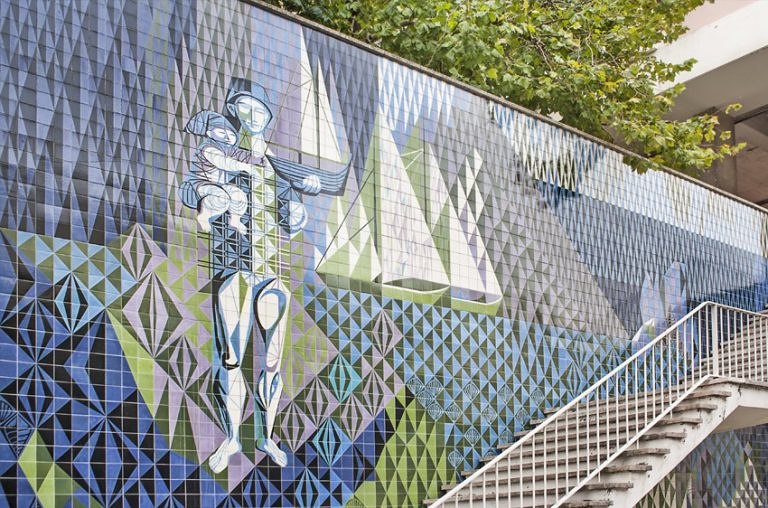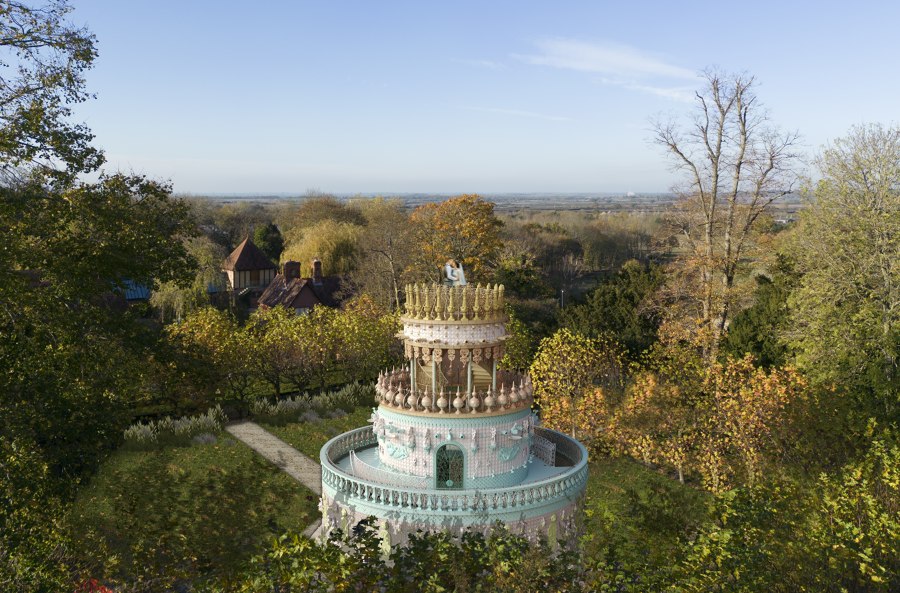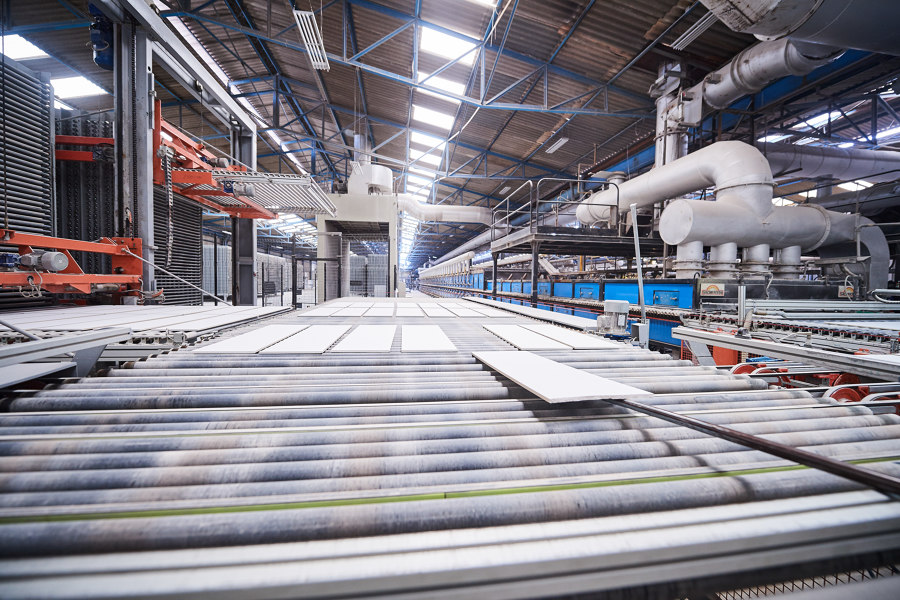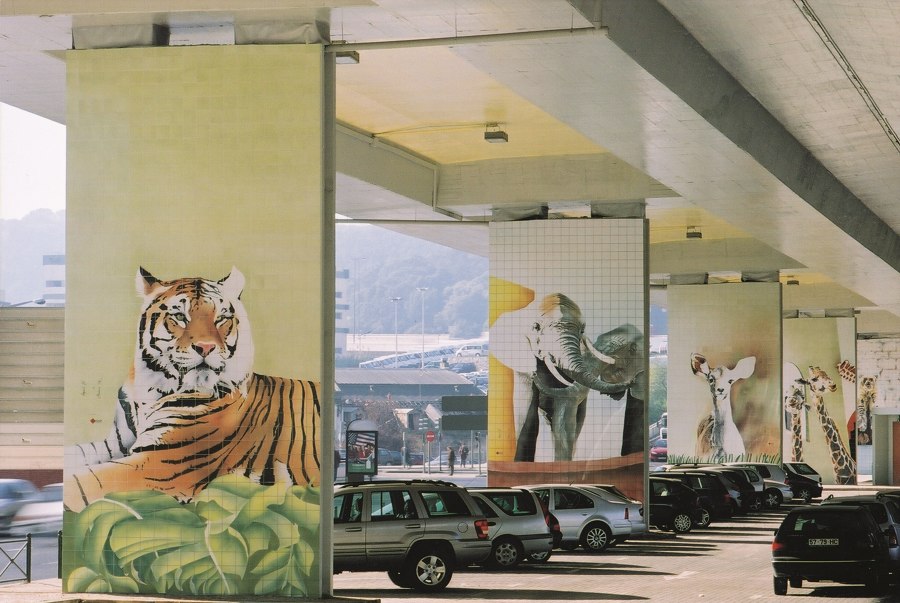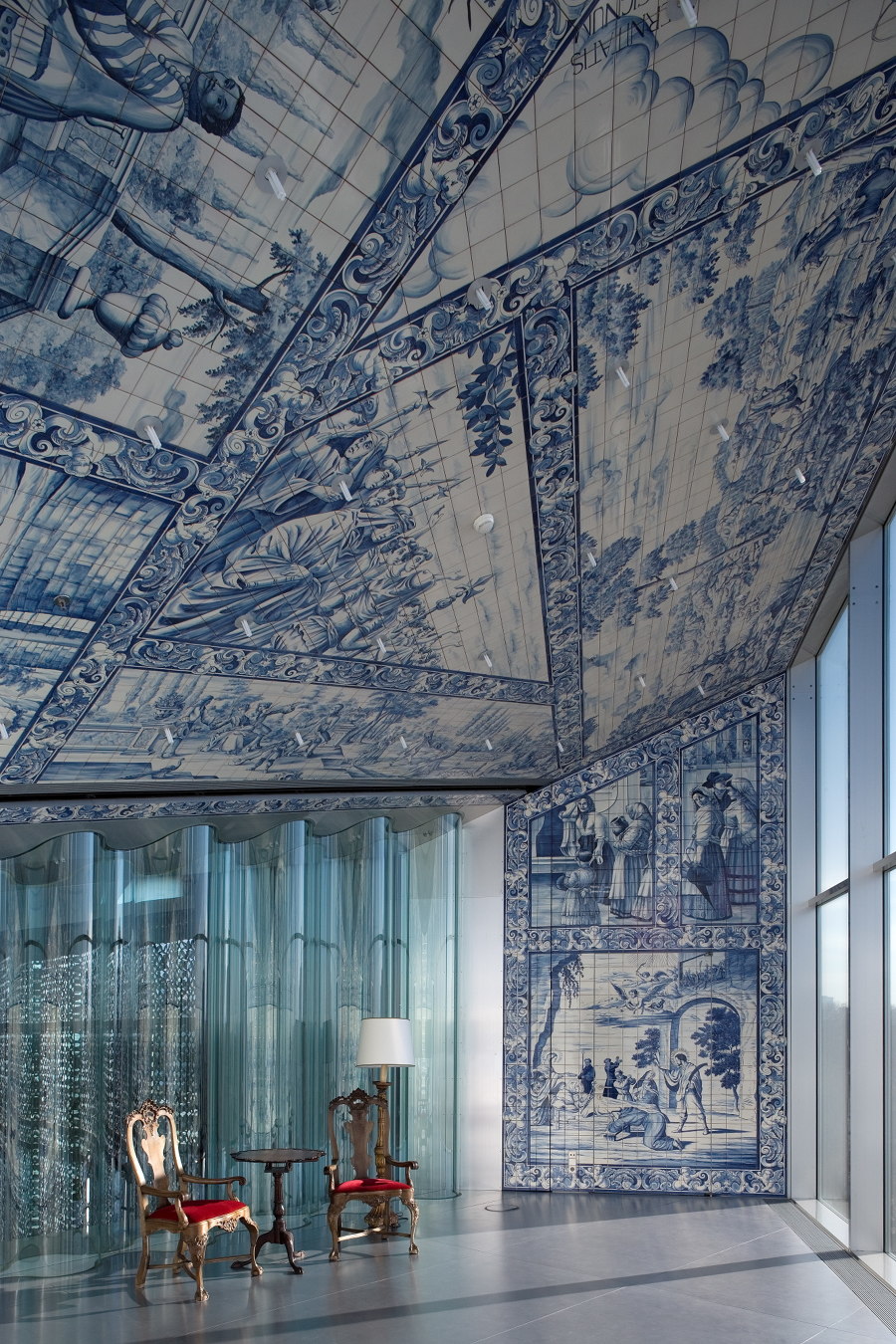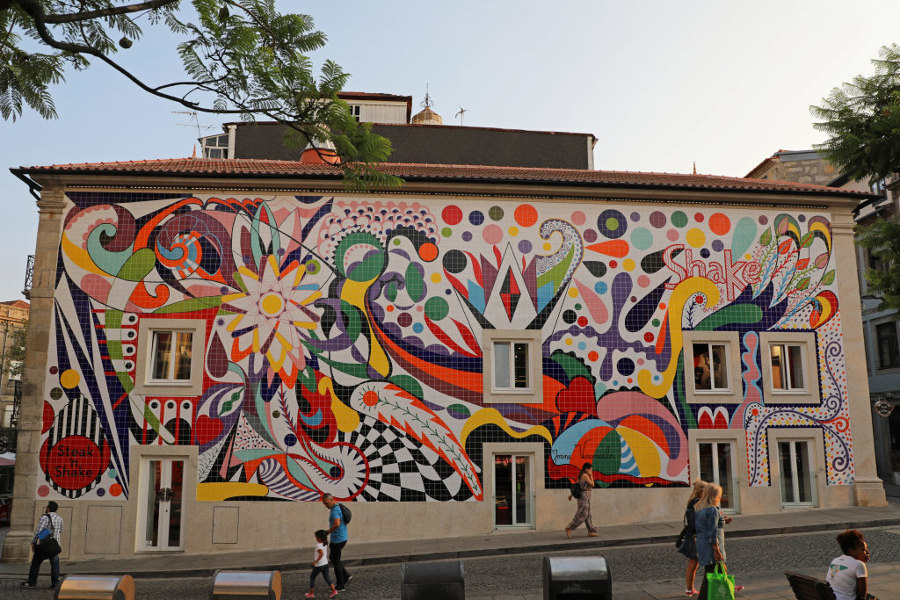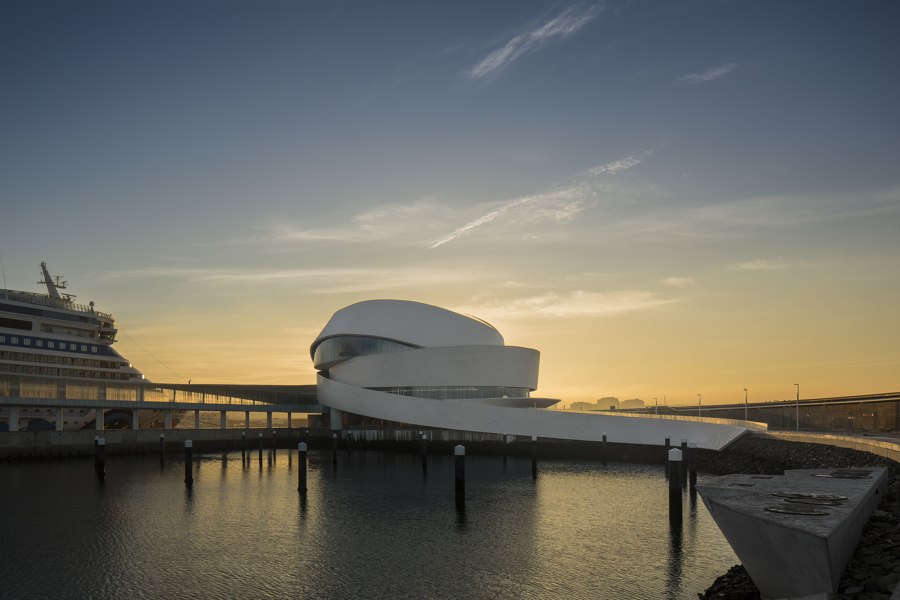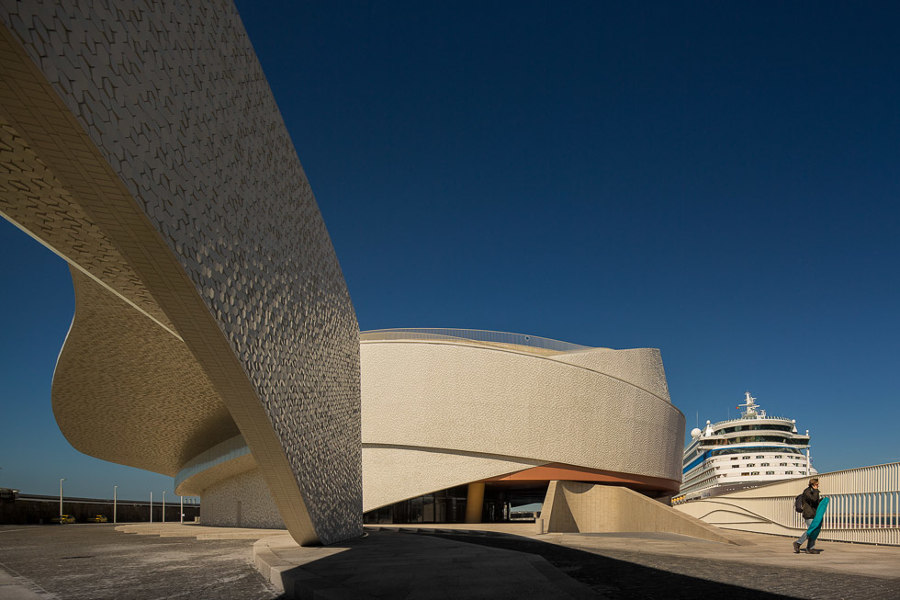The history of Portugal’s long relationship with ceramics, and where it goes from here
Scritto da James Wormald
11.04.23
With quality raw materials nearby, a temperate climate for creative freedom and decades of investment and innovation, Portuguese ceramics is world-renowned. This is its story, and its future.
The Portugal Pavilion in Lisbon is clad in bright ceramic tiles of red and green, depicting both Portugal’s national colours and its typical ceramic facades. Photo: Viúva Lamego
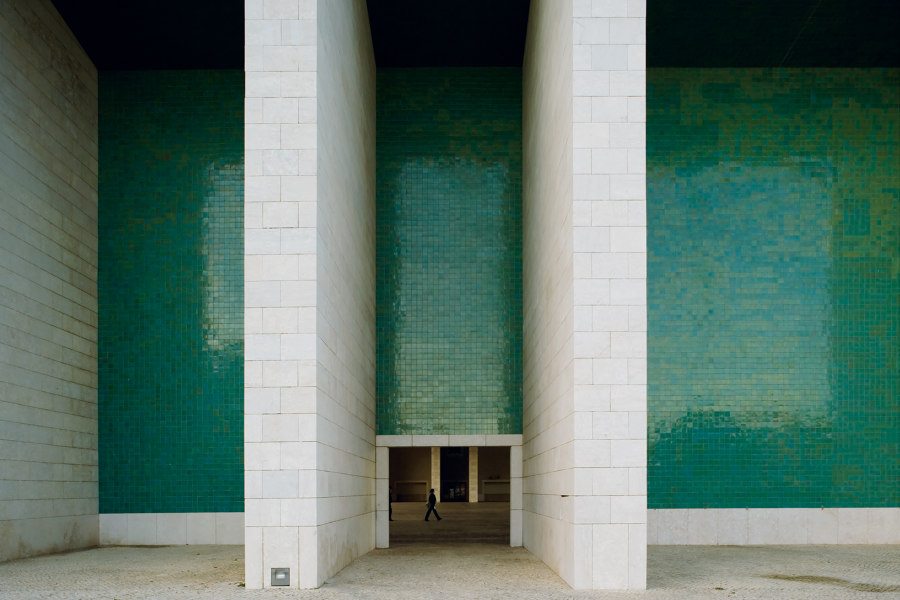
The Portugal Pavilion in Lisbon is clad in bright ceramic tiles of red and green, depicting both Portugal’s national colours and its typical ceramic facades. Photo: Viúva Lamego
×When a country becomes known for its most famous export, the two together can become synonymous with quality. Combinations such as French wine, Italian marble and German engineering are examples of the hallmark of excellence provided simply by a product’s geographic birthplace. While Portugal’s most famous and most passionate exports could equally be cork, football or egg-based sweet treats, there’s far more to the Portuguese culture and economy than preening soccer players and custard tarts.
There’s more to the Portuguese culture and economy than football managers and custard tarts
While Portuguese culture’s relationship with ceramics is known for the distinctively patterned plates, bowls and jugs millions of tourists attempt to keep intact on the journey home, few are paying the extra baggage charge for 50 sqm of ceramic tiles. The country’s agreeable climate, however, along with a history of craftsmanship and the natural strength, durability and pigment of Portuguese clay, means high-quality ceramic facades are an identifiable feature of Portuguese architecture. And the material is exported all over the world for both exterior and interior surfaces.
The Portuguese National Pavilion, for example, built for the 1998 Lisbon World Expo, frames the vibrant national colours of red and green, with a ceramic facade typical of its home city’s streets, while on one of its most famous – Avenida Infante Santo – six colourful, graphical murals adorn public staircases along a 500m stretch of the road. I visited the street during a tour of the region organised by the Portugal Ceramics Group, while also having the opportunity to see five of the family fábricas producing and exporting their ceramic tile collections for use in facades and interior projects abroad, too.
Maria Keil’s 1959 artwork ‘O Mar’ was the first on Lisbon’s Infante Santo steps (top). Its ceramicists, Viúva Lamego, also worked on the Wedding Cake pavilion (middle, bottom). Photos: Viúva Lamego
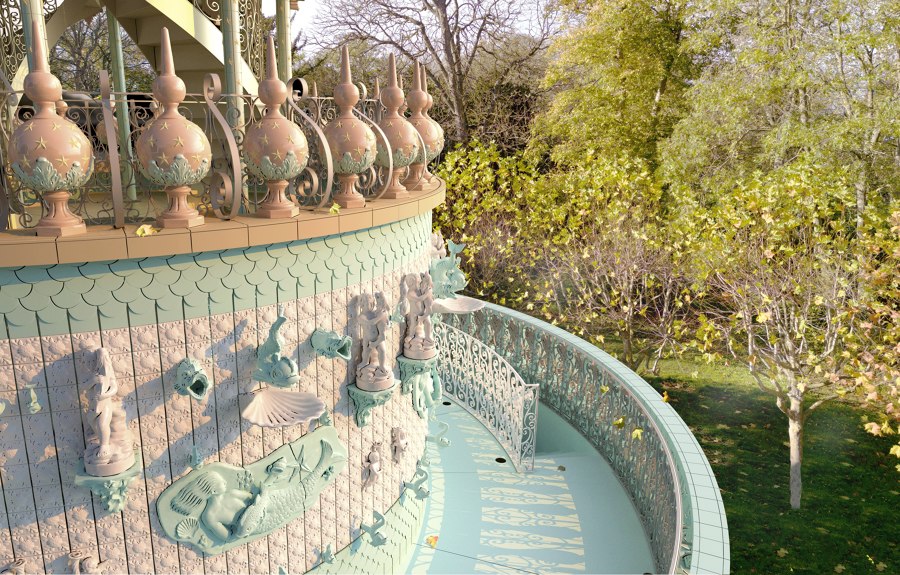
Maria Keil’s 1959 artwork ‘O Mar’ was the first on Lisbon’s Infante Santo steps (top). Its ceramicists, Viúva Lamego, also worked on the Wedding Cake pavilion (middle, bottom). Photos: Viúva Lamego
×Ceramic tradition in Lisbon and abroad
The first mural on Lisbon’s Avenida Infante Santo has stood since 1959. Designed by painter Maria Keil in collaboration with local ceramic tile manufacturer Viúva Lamego, the artwork titled ‘O Mar’ depicts the city’s relationship with the titular sea. Blending a palette of nautical colours and forms such as shells, boats and a fisherman, the wall’s ceramic material has ensured the composition’s colour and contrast remain, despite its age.
The wall’s ceramic material has ensured O Mar’s colour and contrast remain, despite its age
The same can be said, meanwhile, for Viúva Lamego itself. The 164-year-old company continues to manufacture ceramics, mainly by hand, in collaboration with architects, designers and other creatives on a wide range of projects including the aforementioned Portuguese National Pavilion in Lisbon and Rem Koolhaas’ Casa da Música in Porto. One of the historic brand’s most recent projects, for example, is a 12m-tall sculptural ceramic pavilion titled Wedding Cake at Waddesdon Manor in Buckinghamshire, UK, for which its Portuguese artist Joana Vasconcelos was able to dive into Viúva Lamego’s back catalogue of moulds to create over 25,000 tiles and ceramic pieces to adorn the structure.
DOMINÓ’s expanding factory (top), Recer’s bespoke tiles for the Viaduct Sete Rios project by architect Augusto Cid (middle), and smaller single-colour tiles from Primus Vitoria (bottom)

DOMINÓ’s expanding factory (top), Recer’s bespoke tiles for the Viaduct Sete Rios project by architect Augusto Cid (middle), and smaller single-colour tiles from Primus Vitoria (bottom)
×Industry expansion
Instead of looking to the past, however, elsewhere in Portugal’s ceramic scene there’s a focus on the future, with growth and sustainability on both the minds and lips of some of the largest factories hidden away in the hills between Lisbon and Porto. DOMINÓ, for example, started with a humble range of just four floor tiles in 1988, but quickly grew and is continuing to invest in new facilities and equipment to produce larger and thicker formats. Recer, meanwhile, is continuously expanding its own large collections, working with designers to develop new and bespoke products, while Primus Vitoria is instead focusing on single-colour, smaller format tiles – maximum 30 x 60 cm – to offer architects and designers the freedom of creativity, and provide their clients with more expressive, personal surfaces.
All these manufacturers, however, seem to share another common goal. Not only to expand Portuguese ceramics’ reach across the globe, but to do so sustainably by investing in solar energy, recycling more of the water, clay and glaze used in production and even, in DOMINÓ’s case, by fitting made-to-measure thermal jackets to the production line.
Blue-and-white tiles for Rem Koolhaas’ Casa da Música (top), Steak & Shake facade in Porto (middle) and Revigrés’ Praise of Vivacity steps on Infante Santo (bottom). Photos: Joana Vasconcelos (middle)
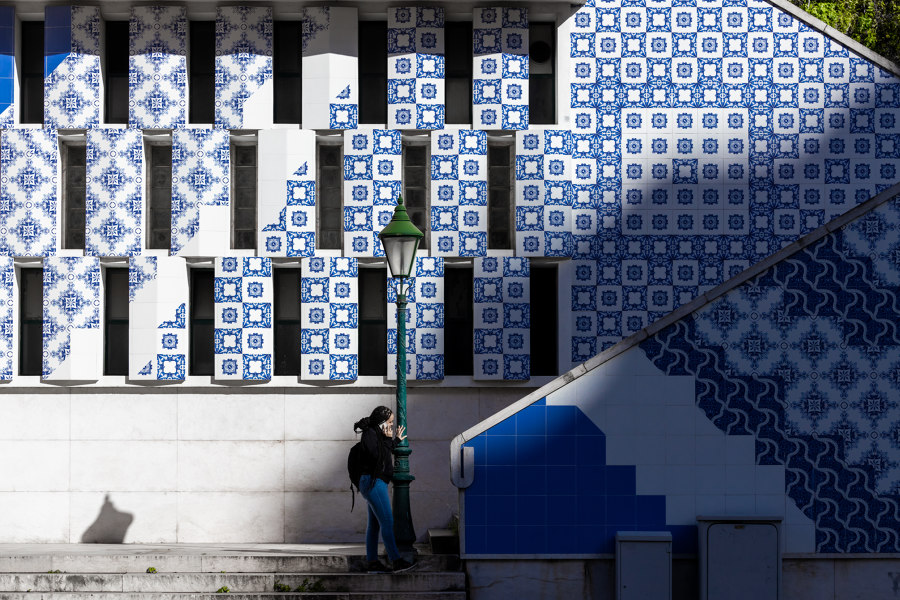
Blue-and-white tiles for Rem Koolhaas’ Casa da Música (top), Steak & Shake facade in Porto (middle) and Revigrés’ Praise of Vivacity steps on Infante Santo (bottom). Photos: Joana Vasconcelos (middle)
×An innovative future for Portuguese ceramics
Despite the city’s iconic São Bento train station and Casa da Música well known for their blue-and-white ceramic surfaces depicting relevant scenes from Portuguese history, Porto has a feeling of youthful vibrancy when compared to Lisbon’s tradition. The ceramic facade of Porto’s Steak & Shake restaurant, for example, by Joana Vasconcelos, combines Portuguese graphical patterns with vibrant colour and scale in a mural. And Porto’s Leixões Cruise Terminal by Luís Pedro Silva Arquitecto, to use another example, smothers its form with hexagonal 3D tiles in a specifically random arrangement, glittering in both natural and artificial light like the scales of a fish.
Leixões Cruise Terminal’s facade wraps around the building like a shawl with its random assortment of 3D hexagonal tiles glittering like a fish’s scales in the sun. Photos: Luís Pedro Silva Arquitecto
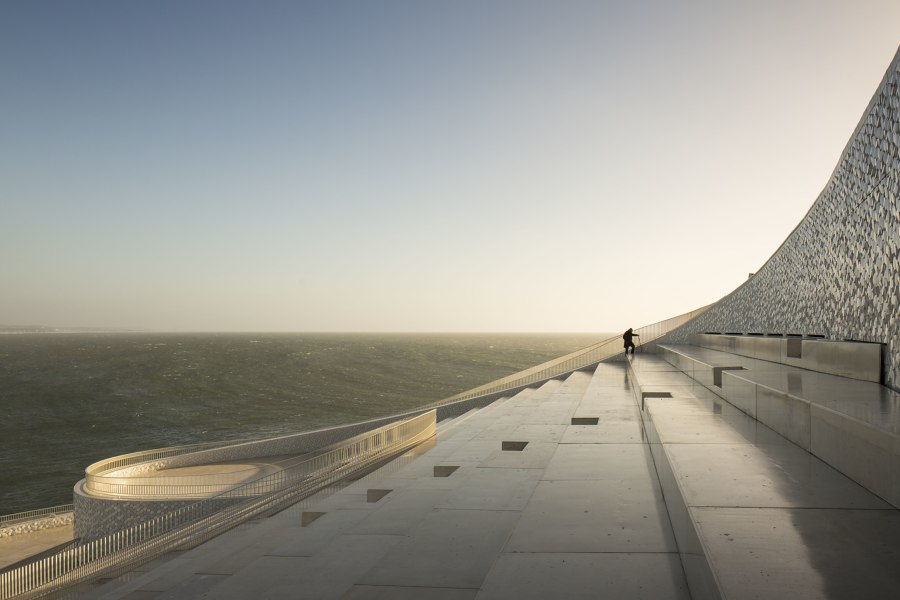
Leixões Cruise Terminal’s facade wraps around the building like a shawl with its random assortment of 3D hexagonal tiles glittering like a fish’s scales in the sun. Photos: Luís Pedro Silva Arquitecto
×Another ambitious Portuguese ceramics manufacturer looking to the future, meanwhile, is Revigrés. Along with up-to-the-minute trending designs and styles such as uncommon shapes, extra-large formats, three-dimensional and marble-look ceramics, Revigrés also produce the full-body colour Cromática range without glaze. Recently specified in the Sagrada Família project in Barcelona, the tiles can chip and erode over longer stretches of time, without losing their colour. Other innovative features developed by Revigrés include a ‘Soft Grip’ finish that feels smooth when dry, but transforms into a grippier non-slip surface when wet.
Revigrés full-body-colour Cromática tiles were smashed and used as mosaics for the Sagrada Família in Barcelona (top), while the brand’s Revisense range brings touch-sensitivity to ceramic surfaces

Revigrés full-body-colour Cromática tiles were smashed and used as mosaics for the Sagrada Família in Barcelona (top), while the brand’s Revisense range brings touch-sensitivity to ceramic surfaces
×With further innovations like ‘Revisense’ – touch-sensitive tiles for home automation – and more in the pipeline like the ‘Revigmagnetic’ system of magnet-applied tiles, and a method to fully recycle once-glazed tiles – making them fully circular – in development, Revigrés and the country’s other tile manufacturers are ensuring Portugal’s cultural future has the durability of ceramics.
© Architonic
Head to the Architonic Magazine for more insights on the latest products, trends and practices in architecture and design, or find inspiration in a whole world of projects from around the globe through ArchDaily’s architecture catalogue.

